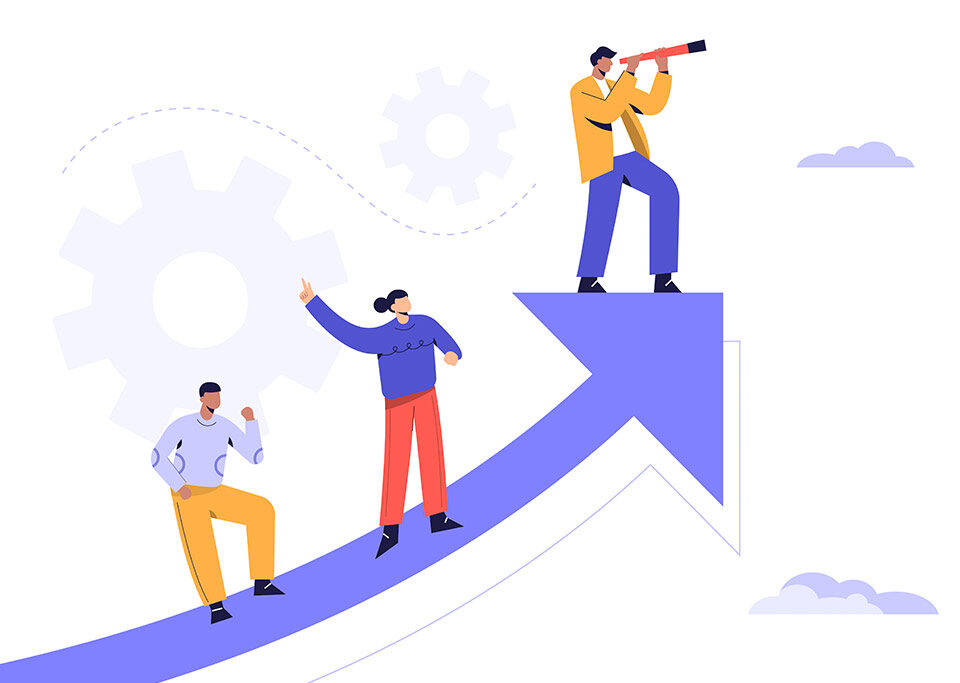- Mail:
- info@digital4pro.com
Human innovation: innovation with the human element at the center

Human innovation: l’innovazione con l’elemento umano al centro
29 Aprile 2020
Arredo&Design: Carlo Sam, Chief Marketing Officer L&S
30 Aprile 2020In today’s scenario it is essential to evolve and adapt to cope with an increasingly fluid and complex context of reference. The accomplishment of schools, a master’s degree or training is not a sufficient condition to keep up with the times and to be innovative. Not even experience itself allows you to face the challenges of every day with peace of mind. From a technological and competitive point of view, products change and evolve rapidly.
Globalization, the simplicity of communicating and reaching distant markets, the ease with which a user can buy and get in touch with new services have led companies to face a level of competitiveness that is unmatched in historical terms. The average user or consumer today has many possible alternatives that make him unfaithful and at the same time very demanding.
New companies are born, often revolutionizing consolidated markets or creating new business models. Their flexibility, by nature devoid of the organizational and mental burden of old infrastructures to be converted, can often be by definition more effective and faster in acquiring quotas or creating new markets.
For the reasons described above, it is more than ever necessary to innovate and evolve to remain a leader, not to risk being delayed, to maintain or develop one’s market positions or sometimes even just to survive.
However, for companies that have already been on the market for some time and do not have a culture of innovation rooted in them, the challenge can become complex and tiring.
It is not enough to say, “From today we innovate”. We need a change of mentality and a change in the way we interact.
First, the will to open up to change must be generalized, not borne by a few. Prototypes or successful projects are used to start the process, but it is not enough if there is no strong will and availability to get involved by everyone, starting from the top.
The change, however, frightens and involves a rebalancing of roles and internal weights. For these reasons, the road is often uphill and finds friction and resistance. If you are unwilling to make sacrifices, you risk failure. If you are unwilling to argue and get back into the game, there is no point in proceeding.
This point is in fact crucial. Innovating today in an extremely complex market means, on the one hand, implementing people’s hard skills, but on the other, sharing knowledge, without obstacles and without constraints and often without strict hierarchies.
In addition, this, if we think about it, is a mental fact. Are we willing to share what we know or have learned with difficulty over the years? Are we willing to recognize soft skills in people as elements of value, which lead to teamwork by partially sacrificing the centrality of individual visibility? The questions are necessary because without these steps, innovating becomes difficult, if not impossible. The value no longer lies in the individual, but in the collaboration between the different skills.
Today the complexity is such that it is not only a matter of brainstorming to get ideas, but in the development phase you must have a close-knit group able to support and share their experiences to find the best solution. Technological innovation alone is no longer able to change the positioning of a company. We need to plan how this will be implemented, we need to define what the user experience will be, how easy it is to make them reap the benefits, reach them with the right communication and manage their after-sales. It is therefore necessary to have all the purchasing experience under control, skills that are hardly evident in one person, but that can potentially be shared only by a close-knit team with clear objectives.
The internal silos between the departments must therefore be broken down and a culture of information sharing should be introduced in favor of the fluid flow of ideas. We must be listening to others opinions and questioning one’s own. Without stances or individualisms. In this scenario, there is no need to fear that others have more knowledge of their own, because this is a lever, not a defect, also and above all for a manager.
Innovation is therefore a process that involves every department, every moment, right from the hiring of new resources. It is okay to go in search of technically qualified people, but it is important to understand their skills based on how they will interact within the team. In addition, a manager should not hire duplicates of himself, but complementary people who can make real contributions.
Another vital mental aspect is openness to failure. If innovation is such, the risk of making mistakes is inherent in the process. This leads to two considerations. The first that some investments may not be successful. The second is that it is necessary to field processes to minimize their “losses”.
I used the term “losses”, but in reality the error itself, if based on well-structured strategies, provides us with additional information that cannot be theoretically acquired in any other way. Therefore, a failure if properly managed always brings with it a partial value.
On the cost minimization front, there are several approaches that aim to define continuous releases, from which to learn to correct the development during the work or to block it if the market responds negatively to the initial stimuli.
Finally, I would mention two other aspects that, from experience, I believe are important within a corporate culture of innovation. The first is related to resilience. For all the reasons described above, bringing news can only meet opposition (more or less strong). You do not have to go down, but you have to persevere, be patient, explain to people the benefits that they will have individually and convince managers that it is an advantage for business. One must measure one’s successes and decisions on objective data, recognized as such, by immediately defining the objectives of each new process or new service / product.
The second point concerns the time to devote to innovation processes. Having dedicated ones would be optimal. From personal experience, these clashes with everyday operations and the various departments, perhaps born and built in the past with very different objectives and ways of working from those necessary in the new context. Time is usually a scarce and precious element. We must try to partially protect the development of new ideas, but in many cases, it will be an uphill road. Precisely in the face of this difficulty, it is important to have people who like their work, constantly looking for new ways to improve it and improve their situation People with passion for what they do and therefore in continuous learning even on parallel themes and not always perfectly related to what happens in the society for which they work. This point reinforces what I said at the beginning with respect to adapting and learning continuously. The experience alone and the teachings received will never be sufficient. It is necessary to learn every day, from suppliers, from competitors, by reading and studying again. Only in this way, can we grow and be bearers of ideas. At the same time, the company must invest in internal training, to avoid finding itself obsolete in a world that runs and that does not look back. For these reasons, innovation functions are often created, but just as often, they can fail in their task if not followed by a more radical internal change.
In summary, if the technological aspect and hard skills can be a first step in being able to change, the human element, its skills and soft skills remain the most important key to be able to introduce innovation into a company.




